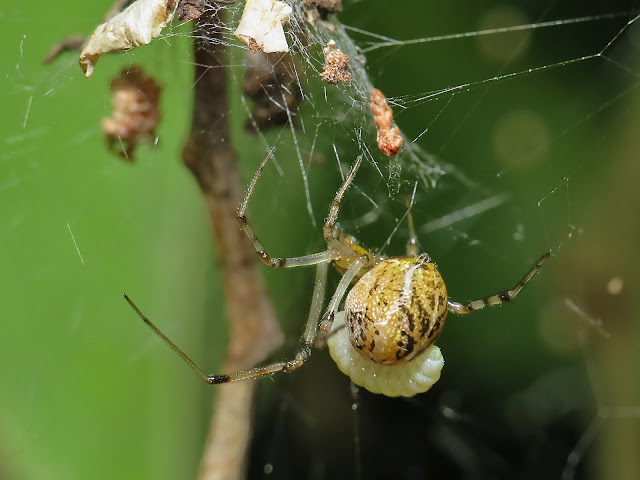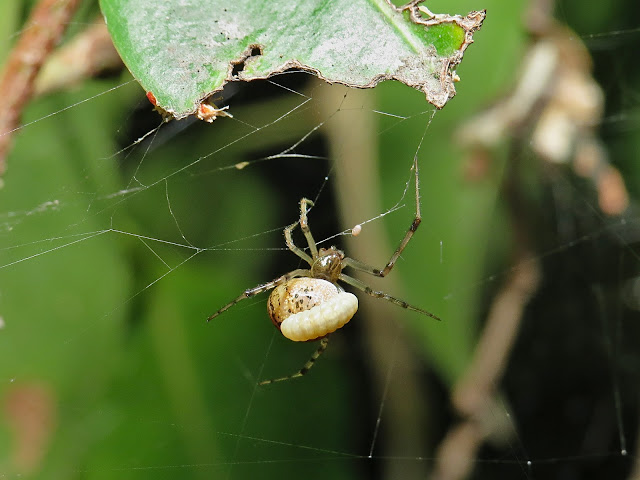I visited South Brisbane Cemetery recently, hoping to photograph nocturnal creepy-crawlies for a Halloween-themed blog post.
And boy, did I find something creepy. I found a zombie!
Now I know what you might be thinking: “That man has watched too much Buffy the Vampire Slayer” and on that point, you are actually correct, but I swear that I did find a zombie, only I didn’t know it at the time. To me, it was just a spider. A spider with a small, white grub on its back.
The spider belongs to the cobweb spider family Theridiidae, whose best known member in Australia is the red-back spider. This particular spider was pea-sized and had a messy web in the foliage of a weeping fig. I never figured out which species it is because learning about the grub became my focus, but if anyone reading this can enlighten me, please let me know.
As for the grub, it’s the larval form of a wasp in the Ichneumonidae family, which are perhaps nature’s most famous parasitoids. * Within this family are a small group of closely-related genera that target cobweb spiders, and unlike most spider-hungry grubs, they don’t feed on the host from the inside, nor is the host paralysed. The spider just keeps living its life as normal, except that as the grub attached to its body grows, the behaviour of the spider begins to change.
Scientists discovered a few years ago that wasp larvae in the Zatypota genus are seemingly able to control the behaviour of their spider hosts through mind-control. The mechanism for this is not completely understood, but hypothesised to involve tapping into the spider’s hormonal system, then switching certain behaviours on and off. The most striking example of this is when the wasp larvae induces its host to construct a specially-made silken shelter to pupate inside of—the spider’s final act before being killed and consumed.
Research conducted here in Brisbane’s suburbs has determined that Zatypota kauros is our common local species in this genus-group of wasps, and also that this species can occasionally target hosts outside of the cobweb spider family. Such as humans. **
So how’s that for a Halloween graveyard story?! Zombie mind-control and cold-blooded murder… enough excitement for one night I think!
* A parasitoid is a parasite which kills its host.
** Just kidding. Though they are big meanies to our delightful golden orb-weavers.
Further Reading:
Smithsonian Magazine (related species)


Life in a graveyard. Never boring!
ReplyDeleteCan surprisingly be a good place to see wildlife!
DeleteYou didn't happen to see a Devil's Coachman while you were there, did you. Seems like an appropriate location.
ReplyDeleteWow, this is facinating. What a cool story.
ReplyDelete